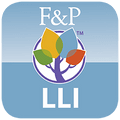Programs
August 8, 2022

Leveled Literacy Intervention
- Issue Areas
- K-12 education
- Outcomes
- Elementary and middle school success
Program overview
- Supplementary, small-group activity designed to help struggling readers reach grade-level competency
- Focuses on phonological awareness, fluency, vocabulary, reading comprehension, and other literacy skills
- Provides texts with progressive difficulty and systematic lesson plans matched to students’ abilities
- Strategies
-
Literacy curricula and interventions
- Cost
-
Approximately $3,000 per classroom set of materials
- Positive effects on general reading achievement
- Potentially positive effects on reading fluency
- Improved general reading achievement by an average of 11 percentile
- Improved reading fluency by an average of 11 percentile points
- Note: This content is under review
- Start the leveled literacy intervention as early as possible during the school year to provide the full 14 weeks of education.
- Frequent trainings and integration of trainers with school administration help maintain program fidelity.
- Program should be administered 30-45 minutes per day, 5 days per week, with the recommended group size.
- Without appropriate staffing and small group approach, participants will not reap the full benefits of the program.